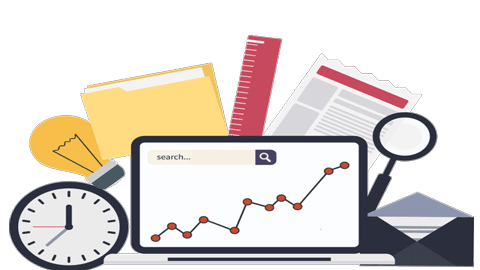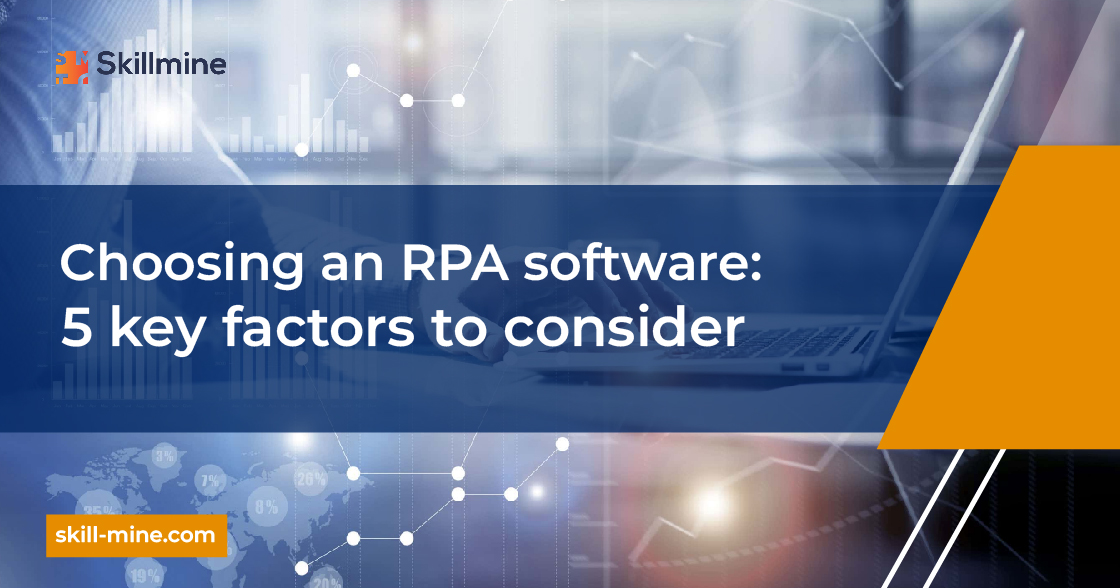According to Gartner, in the next two years, 72% of organizations will work with RPA. Gartner has also classified RPA as the fastest-growing corporate software category. Robotic Process Automation, or RPA, is one of the ground-breaking technologies that have the power to transform enterprises digitally. By automating labor-intensive, routine, rule-based processes, this technology decreases the need for manual labor while increasing operational effectiveness and accuracy.
Robotic Process Automation is the best choice if you are wondering about an intelligent solution to automate processes. Before applying RPA to a process, you should consider whether the features of RPA are right for your business. Here are five factors you should consider when choosing an RPA.
Benefits of RPA
1. Simplified Configuration: RPA doesn’t necessarily demand coding expertise; its user interfaces often feature drag-and-drop functionalities, making it accessible for non-technical staff to implement.
2. Swift Cost Savings: By lessening the workload on teams, RPA solutions allow staff to be reassigned to other essential tasks, enhancing overall productivity and return on investment (ROI).
3. Enhanced Customer Satisfaction: Bots and chatbots, working continuously, reduce customer wait times, resulting in heightened levels of customer satisfaction.
4. Increased Employee Morale: Robotic Process Automation services relieve teams of repetitive, high-volume tasks, enabling individuals to focus on more strategic decision-making, positively impacting employee happiness.
5. Improved Accuracy and Compliance: Programming RPA robots to adhere to specific workflows and rules reduces human error, especially in tasks requiring precision.
6. Seamless Integration with Existing Systems: RPA software operates on the presentation layer of existing applications, causing no disruption to underlying systems.
Ease of Implementation
No, RPA and AI are distinct entities. However, the fusion of RPA and AI opens up vast new potentials for enterprises globally. Notably, RPA technology enables the integration of advanced AI capabilities, such as Machine Learning models, Natural Language Processing (NLP), character and image recognition, and more, into RPA robots. Equipping robots with these AI skills significantly broadens their capacity to handle cognitive tasks involving:
1. Interpretation of documents, including semi-structured or unstructured data.
2. Visualization of screens, including virtual desktops.
3. Understanding and engaging in speech, conversations, and chats.
Moreover, AI facilitates the systematic identification of a comprehensive range of automation opportunities and the establishment of a robust automation pipeline through RPA applications like process mining. In a period where companies are striving to expedite the integration of AI into front-line activities and decision-making, RPA often serves as AI’s ‘last-mile’ delivery system. Robots can be configured to apply Machine Learning models to automated decision-making processes and analyses, embedding machine intelligence deeply into day-to-day operations.
Ease of Implementation
Robotic Process Automation is one of the most accessible software solutions to implement processes. Automated robots are compatible with existing legacy systems. Therefore, you must check compatibility with old techniques to select the necessary RPA tools for the process. This test will help businesses convert old data quickly, and efficiently and avoid risks.
Speed
RPA has a faster working speed than humans. On average, RPA’s job completion time is three times shorter than manual labor. It can work continuously without any time limit. Businesses can optimize processes and improve labor productivity significantly using RPA solutions. Similarly, automatic robots can also solve staff shortages and minimize labor costs.
Technical Features

Technical feature is the most critical factor of RPA that determines whether the enterprise chooses the solution or not. You can consider several features: screen slicing, perceptibility, and scalability.
The security feature of the RPA is also an essential factor that businesses should consider before applying it. When conducting information aggregation, RPA accesses the company’s private data to be able to work. These are all confidential data that the company cannot disclose. Therefore, if the security of RPA is uncertain, enterprises will face the risk of data theft. The system can be easily attacked by malicious elements from the outside, causing great harm to the company.
Architecture
Any firm can benefit significantly from well-implemented RPA software. Before selecting a RPA tool, businesses should ensure that they have the necessary infrastructure to use the RPA solution, including abilities and competence. Hiring RPA experts is also a good move to help businesses build their RPA strategy.
Scalability

Scalability should be one of the crucial factors you consider while selecting an RPA solution for your business. Any good RPA solution should allow you to choose a perfectly adaptable software bot for your assessments. Bots available in the market can perform various processes and help you scale up operations as and when required without accruing additional costs to your business.
CASE STUDY 1
A leading manufacturer faced difficulty processing hundreds of invoices from multiple vendors. The format of the invoices significantly varied among the vendors. This required more than four employees to transcribe the data from the invoices manually. The end-to-end process was further delayed due to several hierarchical approvals.
Smart bots were deployed to automate time-intensive and manual operations involved in processing invoices. The Smart Bots read and understand data from several unstructured documents and present the extracted data to users via an intuitive interface. This significantly expedited invoice approval.
CASE STUDY 2
A fast-growing bank was heavily dependent on manual labor for processes related to issuing, managing, and closing letters of credit. Users had to manually identify the records expiring that day for processing closures, which was time-consuming.
Smart bots automated the daily closure process for letters of credit to provide a frictionless trade finance experience. RPA Bot logs into the core banking system to identify the records expiring that day and transcribes that information into an Excel file. The Bot is trained to run rules-based inquiries for each record on the core system to determine if the closure needs to be processed.
Popular RPA Software
UiPath:
UiPath stands out as a leading RPA tool with its user-friendly drag-and-drop interface, facilitating the creation of flowcharts and diagrams. Its extensive library of RPA services enables automation across various processes, from data entry to web scraping and email marketing. Renowned for streamlining digital transformation, UiPath offers features like automated screen entry, data extraction, and a growing library of API connectors.
Automation Anywhere (AA):
Automation Anywhere provides an end-to-end RPA platform, empowering organizations to digitize and enhance efficiency. Offering features like process mining and artificial intelligence, Automation Anywhere aids in developing, deploying, and managing bots.
Blue Prism:
Blue Prism enables the creation of digital workers to automate manual processes, catering to businesses of all sizes. Although requiring some programming knowledge, Blue Prism is user-friendly for developers and offers features like integration with multiple automation tools and a control room.
Microsoft Power Automate:
Microsoft Power Automate offers robust RPA solutions for automating tasks such as data entry and document processing. With an intuitive interface and extensive list of templates, Power Automate is accessible to users of all levels. Its availability across desktop, mobile, and web platforms appeals to global businesses.
Appian:
Appian provides a web-based RPA solution, deployable on-premise or in the cloud, with features like low-code development and a bot marketplace. Appian targets businesses seeking automation with minimal coding requirements.
Datamatics:
Datamatics RPA offers solutions for automating business processes with software robots. Its components include TruBot Designer, Cockpit, Analytics, and Station, featuring universal recorder and low-code design capabilities.
Nintex RPA:
Nintex RPA focuses on automating manual, time-consuming processes with its drag-and-drop interface and 300 available actions. Popular in regulated industries, Nintex RPA offers automation for tasks like data entry and file conversion, without requiring programming skills.
Conclusion
Selecting a RPA software healthcare that matches your business requirements is essential. Since no single RPA tool is ideally suited for every process and organization, it requires careful consideration. Your ideal RPA solution should offer scalability, the latest technical features, speed, ease of use, and consistency.
Looking for expert technology consulting services? Contact us today.





